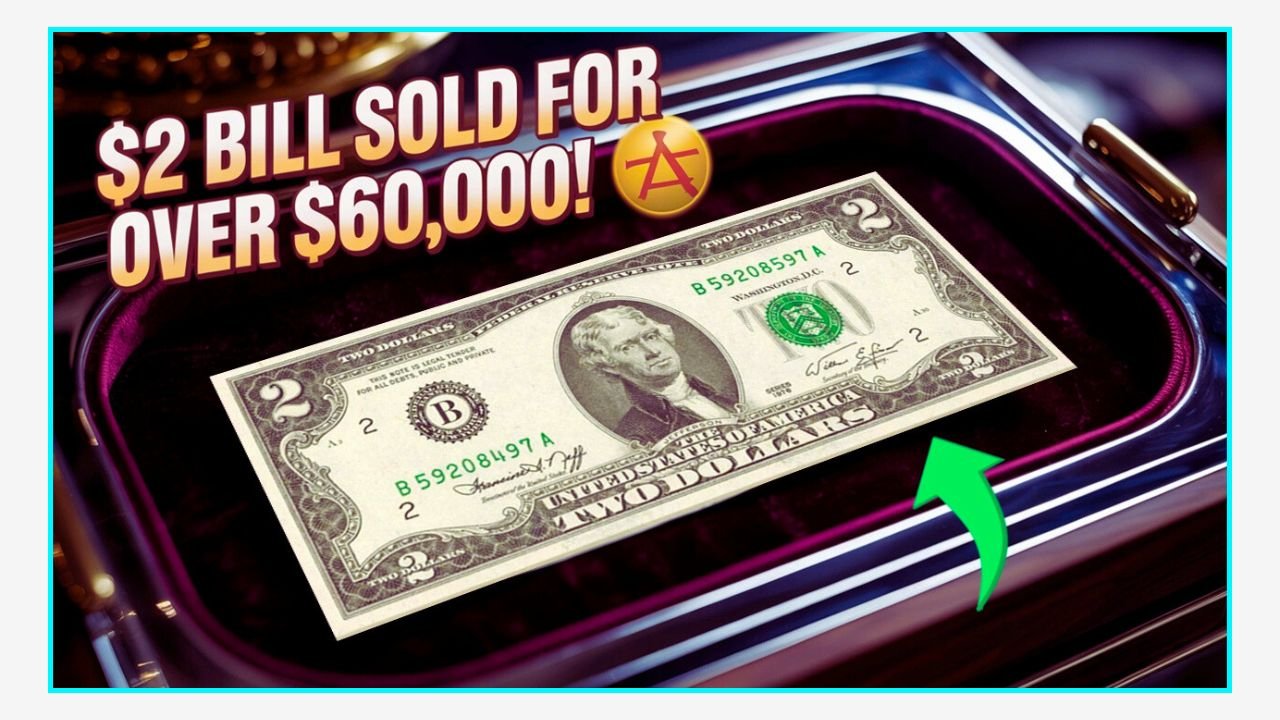A Hidden Treasure in Your Wallet
Most people don’t think twice about a $2 bill. It’s just a quirky piece of cash you might get as change. But what if that little bill could be worth over $60,000? Across the U.S., collectors are on the hunt for $2 bills with a special feature called a repeater serial number. These rare patterns can turn an ordinary note into a jackpot. Let’s dive into what makes these bills so valuable and how you can check your own cash for a potential fortune.
What Is a Repeater Serial Number?
A repeater serial number is a unique pattern where the digits repeat in a sequence. For example, numbers like 12121212, 45454545, or 37373737 are repeaters. These patterns are super rare because of how the U.S. Bureau of Engraving and Printing assigns serial numbers. Since $2 bills are already less common in circulation, finding one with a repeater serial makes it a collector’s dream. In fact, a 1995 $2 bill with the serial number 37373737 sold for over $60,000 at a private auction because of its perfect repeating pattern and crisp condition.
How to Spot a Valuable $2 Bill
Checking your $2 bill is simple and takes just a moment. Here’s what to do:
- Look at the Serial Number: Find the green or black 8-digit number in the upper right and lower left corners of the bill.
- Check for Repeating Patterns: A true repeater has digits that repeat in a clear sequence, like 12341234 or 29292929.
- Inspect the Condition: Bills in uncirculated condition—no creases, tears, or smudges—are worth much more.
- Note the Year and Series: Older bills, like those from 1976 (Bicentennial) or 1995, can be extra valuable with a repeater serial.
If you spot a repeater, don’t spend it right away. It could be worth thousands!
| Feature | Details |
|---|---|
| Serial Number | 8 digits, repeating (e.g., 12121212) |
| Location on Bill | Upper right and lower left corners |
| Valuable Series | 1976, 1995, 2017A |
| Condition | Uncirculated or near-mint is best |
Why Are These Bills So Special?
The $2 bill itself is already a bit of a novelty. It’s legal tender but not used as often as $1 or $5 bills, with only about $3 billion in circulation in 2022, compared to $54.1 billion for all U.S. currency. Add a repeater serial number, and you’ve got something collectors go crazy for. The combination of rarity, symmetry, and the bill’s historical value—like the 1976 Bicentennial issue with its unique reverse design of the Declaration of Independence—drives up demand. A 1976 $2 bill with a repeater serial recently sold for $78,000, showing just how much these features matter.
What to Do If You Find One
If you think you’ve got a repeater $2 bill, don’t fold it or toss it in your wallet. Here’s how to protect it:
- Take clear photos of the front and back.
- Store it flat in a protective currency sleeve to avoid damage.
- Avoid cleaning or handling it too much, as even small creases can lower its value.
- Contact a professional currency appraiser or check online collector forums like MyCurrencyCollection.com for advice.
- Consider selling through auction sites like Heritage Auctions or eBay, where rare bills often fetch high prices.
A 2017A $2 bill with a repeater serial was recently valued at $27,500, proving these treasures are still out there.
Keep Your Eyes Open
Next time you get a $2 bill, take a second to check its serial number. That small piece of cash could be worth way more than a coffee or a snack. Repeater serials are just one type of “fancy” serial number—others, like ladders (12345678) or solids (88888888), can also be valuable. With millions of $2 bills still floating around, you might just stumble across a hidden gem. So, before you spend that $2, ask yourself: Is this just pocket change, or could it be a life-changing find?

